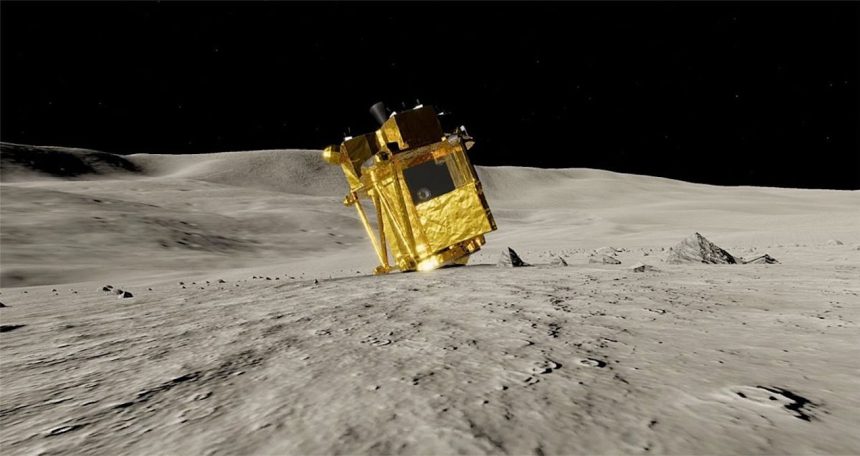The mission was by no means perfect; after all, the Japanese lunar lander SLIM was off-balance from the start. But at least the probe from the Japanese space agency JAXA accomplished something that only four other nations had achieved before: a (somewhat) gentle landing on the Moon.
Although the lander did not stand upright on the Earth’s satellite as planned and suffered from energy shortages, it survived several lunar nights and was later able to re-establish contact with the ground station on Earth. However, the project has now definitively ended: JAXA has declared the SLIM mission over after nearly eight months.
No More Communication
Communication with the probe has not been possible since last week, the agency announced on Monday on the online service X. “We have concluded that there is no prospect of successfully restoring communication with SLIM.
“
SLIM stands for “Smart Lander for Investigating Moon.” With the landing of the 2.40-meter by 1.70-meter probe on the Earth’s satellite, Japan became the fifth nation to land on the Moon, following the USA, the Soviet Union, China, and India, in early January. Two earlier Japanese lunar missions in 2022 and April 2023 had failed.
Longer Than Expected
“SLIM continued to transmit information on its status and the surrounding environment for a much longer period than expected,” explained the space agency JAXA. The probe had landed on its side during its Moon landing, causing its solar panels to face west instead of upwards as planned. As a result, the device initially received only a little sunlight and consequently little power. Nevertheless, SLIM managed to transmit images of the lunar surface back to Earth.
The mission’s goal was to reach rock at the lander’s site in the Shioli crater that is usually buried deep beneath the lunar surface. This rock could provide clues about potential water occurrences on the Moon.






